Overview
This article presents ten essential insights into API-driven talent flow, designed to significantly elevate the recruitment processes for sales team leaders. By leveraging advanced AI technologies, data analytics, and automation tools, organizations can streamline hiring, enhance candidate experience, and ensure alignment with their strategic goals. Ultimately, these approaches lead to more effective talent acquisition strategies that address the complexities of modern recruitment.
As the recruitment landscape evolves, embracing these insights can transform how sales teams attract and retain top talent. The integration of technology not only simplifies the hiring process but also enriches the overall experience for candidates, fostering a more engaged and motivated workforce. This alignment with organizational objectives is crucial in today’s competitive market, where attracting the right talent is paramount to success.
In conclusion, adopting these ten insights can empower sales team leaders to refine their recruitment strategies, resulting in a stronger, more capable team. The future of talent acquisition lies in the ability to adapt and innovate, making it imperative for leaders to stay informed and proactive in their hiring practices.
Introduction
The recruitment landscape is rapidly evolving, driven by the integration of advanced technologies and the increasing demand for efficiency. Sales team leaders now have a unique opportunity to harness API-driven talent flow insights, streamlining hiring processes and enhancing candidate engagement.
However, as organizations adopt these innovative tools, they face critical questions:
- How can they ensure that these technologies not only improve operational efficiency but also foster a fair and inclusive hiring environment?
- Exploring these insights could redefine recruitment strategies for sales teams in 2025 and beyond.
Websets: AI-Powered Talent Discovery for Efficient Recruitment
Websets harnesses advanced AI algorithms to revolutionize talent discovery, offering that empower organizations to effectively identify and engage potential applicants. By analyzing extensive datasets, sales teams swiftly pinpoint individuals who meet specific criteria, significantly reducing hiring time. This AI-driven approach not only enhances operational efficiency but also leverages API-driven talent flow insights to ensure that sourced candidates closely align with the roles being filled.
Recent advancements in AI hiring technology, exemplified by Workday's acquisition of Paradox, highlight the industry's transition towards more human-centered selection processes. Companies employing AI tools have reported remarkable improvements in hiring efficiency, with early implementations revealing a 54% increase in recruiter capacity.
For instance, Eightfold's Talent Intelligence Platform leverages deep-learning algorithms to match candidates based on both stated qualifications and inferred skills, guaranteeing a more precise fit. As organizations increasingly embrace AI in their hiring practices, they are not merely enhancing operational capabilities; they are transforming the hiring landscape into a more efficient and equitable system through API-driven talent flow insights.
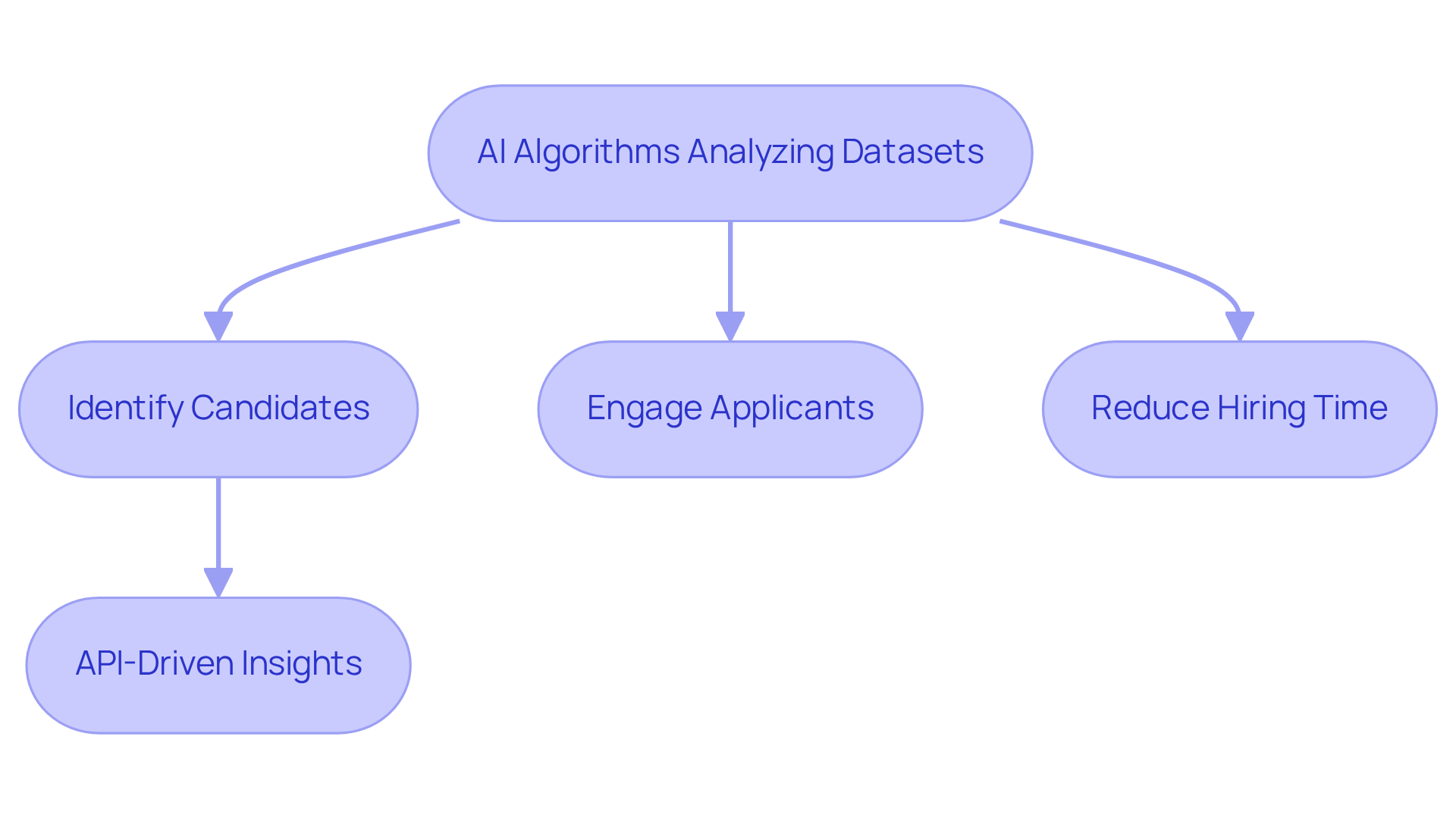
API-Driven Architecture: Enhancing HR System Integration
API-driven architecture empowers Websets to seamlessly integrate with existing HR systems, facilitating a smooth flow of data across platforms. This integration is crucial for sales teams, as it centralizes all recruitment-related data, making it readily accessible. By utilizing APIs, organizations can automate data transfers, significantly reducing manual entry mistakes and enhancing the overall efficiency of the hiring process.
Websets' advanced enable sourcing individuals who possess unique qualities, ensuring that sales teams can find the right talent to meet their specific needs. Delante's experience with centralized data management demonstrates how integrating HR systems can optimize hiring processes and enhance operational efficiency.
Organizations that have implemented API-driven talent flow insights report enhanced candidate tracking and quicker onboarding times, showcasing the tangible advantages of this method. Sunaree Komolchomalee, Head of HR, emphasizes, 'With this strategy focused on api-driven talent flow insights, we maintain one source of truth for all people’s data that flows seamlessly throughout our systems.'
Furthermore, expert insights highlight that a centralized data management system not only streamlines recruitment but also supports strategic decision-making. This allows sales teams to focus on high-value activities rather than administrative tasks.
As organizations continue to scale, the importance of integrating HR systems with APIs becomes increasingly clear, ensuring that data remains consistent and actionable across all functions. To maximize these benefits, sales team leaders should prioritize selecting hiring tools with open APIs, facilitating smoother integration and data flow, while leveraging Exa's capabilities for enhanced lead generation.
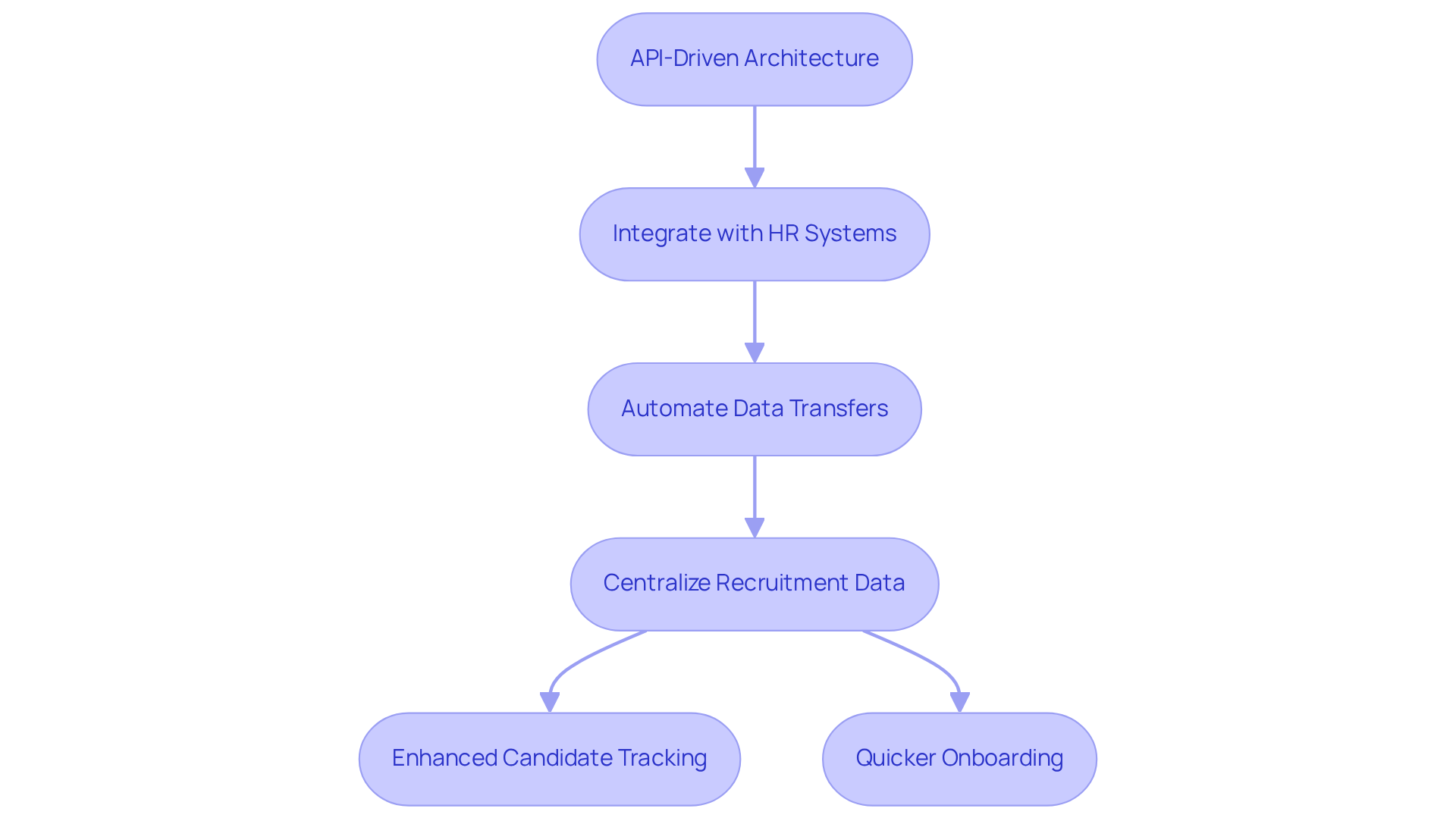
Automation Tools: Revolutionizing Talent Acquisition Processes
Automation tools within Websets significantly enhance the talent acquisition workflow. By streamlining applicant sourcing, interview scheduling, and other repetitive tasks, these tools enable sales teams to focus on engaging with applicants and refining recruitment strategies. This shift not only accelerates the recruitment process but also enriches the candidate experience, increasing the likelihood that top talent will accept job offers.
Websets' advanced AI-powered search engine, specifically designed for complex queries, empowers recruiters to discover niche talent and insights often overlooked by traditional methods. For example, companies like Chipotle have effectively leveraged Websets' AI-driven assistants, raising application completion rates from 50% to 85% and reducing recruitment timelines. These results underscore the tangible benefits of automation.
Moreover, research indicates that organizations employing AI in their recruitment strategies are 46% more likely to achieve successful hires, further demonstrating the effectiveness of these innovative tools. With Websets' and premium support, sales team leaders can bolster their hiring efforts, ensuring they possess the necessary resources to navigate peak demands.
As automation continues to evolve, its integration into hiring processes emerges not merely as a trend but as a transformative shift that enhances efficiency and applicant engagement. Sales team leaders should actively consider exploring these automation tools to harness Websets' unique capabilities for enriched data and targeted outcomes.
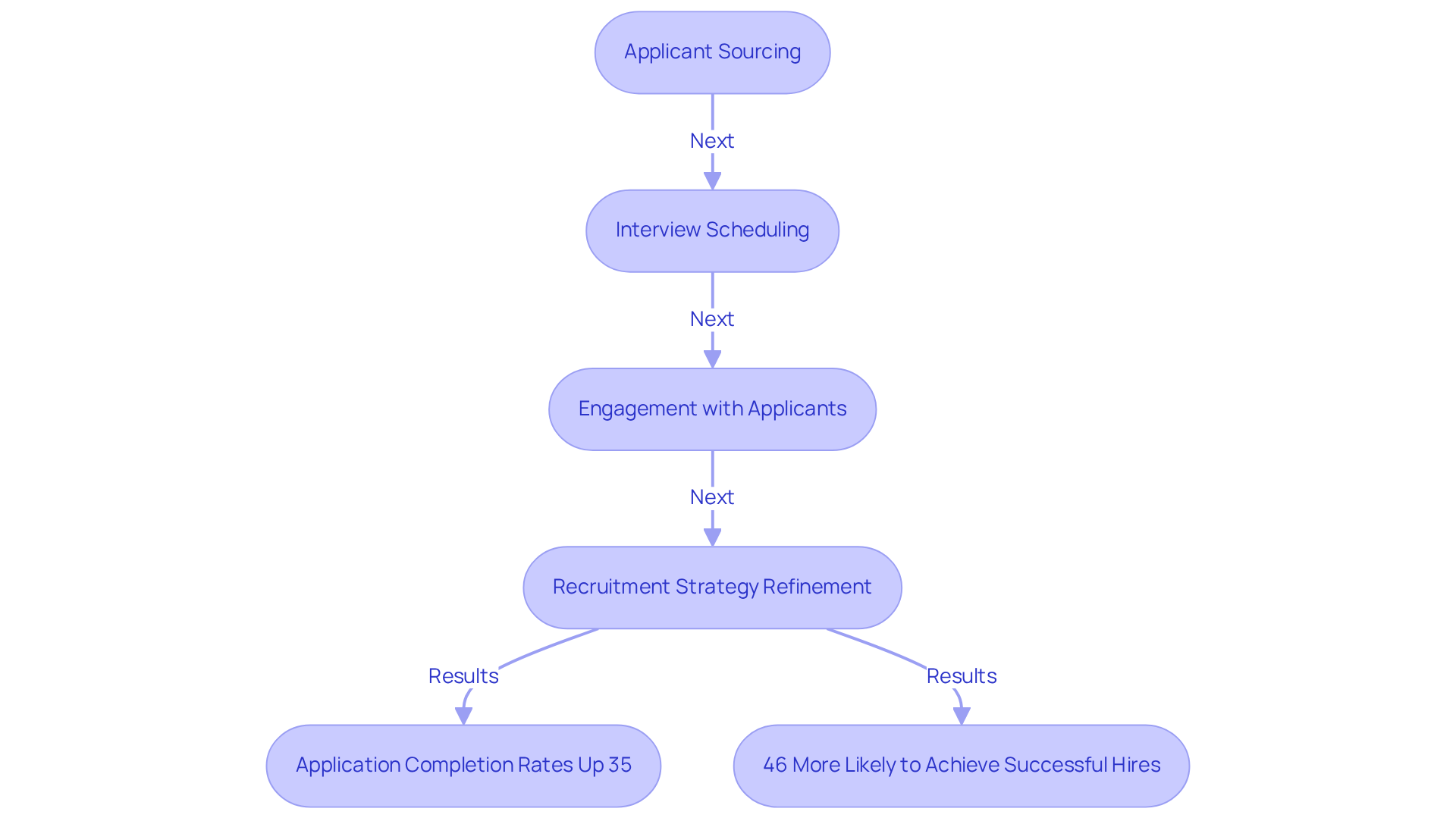
Data Analytics: Driving Informed Recruitment Decisions
Data analytics is essential in the selection process, as it provides api-driven talent flow insights into applicant behavior, market trends, and employment patterns. leverages these analytics, backed by flexible, high-capacity rate limits and premium support, empowering sales teams to pinpoint the most effective recruitment channels and strategies. Through data analysis, organizations can leverage api-driven talent flow insights to refine their approaches, ensuring they attract suitable candidates and make informed recruitment decisions that align with their business objectives.
For example, companies like PS Kenya have effectively utilized data analytics to optimize their HR operations, tackling payroll and compliance challenges across various countries. This integration not only enhances operational efficiency but also improves the overall applicant experience by utilizing api-driven talent flow insights to personalize interactions and meet expectations. Consequently, organizations can achieve a higher quality of hire by utilizing api-driven talent flow insights, as evidenced by the correlation between data-driven hiring decisions and applicant success in their roles. By focusing on skills, experience, and accomplishments, companies can mitigate unconscious bias and enhance the effectiveness of their hiring processes.
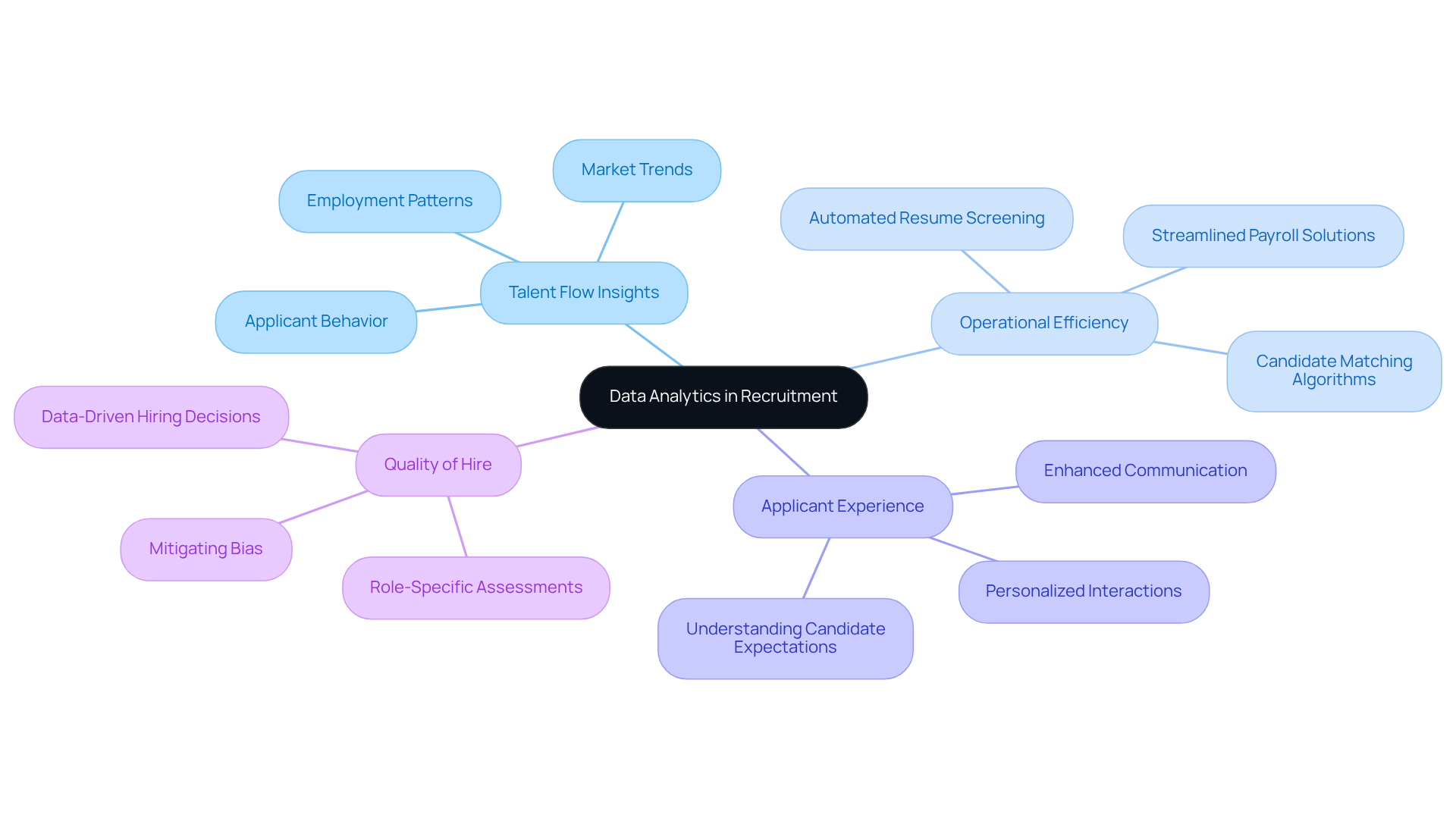
Candidate Experience: Optimizing the Recruitment Journey
Enhancing the applicant experience is essential for successful recruitment. Websets facilitates a seamless and engaging journey for applicants, from application to onboarding, by leveraging to streamline this process. Prompt communication and personalized interactions are paramount; notably, 66% of job applicants accepted offers due to a positive applicant experience. Furthermore, a user-friendly application system significantly boosts satisfaction, as 60% of applicants abandon lengthy or complex submissions. Companies that prioritize these aspects not only enhance the likelihood of offer acceptance but also strengthen their employer brand in a competitive job market.
For instance, organizations employing structured interviews, supported by Websets' data analysis tools, have reported a reduction in recruitment bias. Additionally, those that emphasize clear communication have significantly improved applicant engagement. By investing in the applicant experience through Websets' innovative solutions, businesses can utilize API-driven talent flow insights to transform their hiring processes into powerful strategies for attracting and retaining top talent.
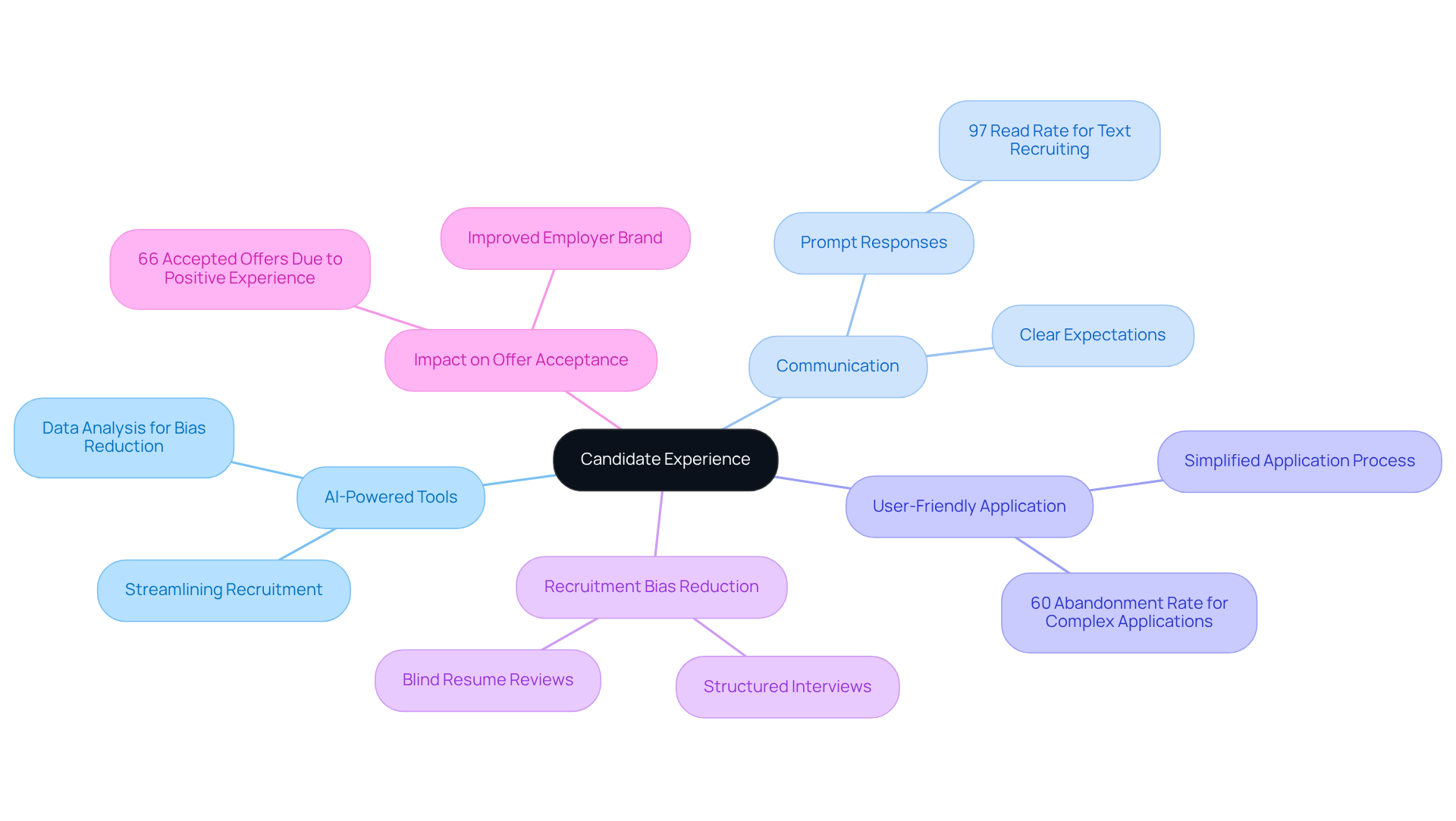
Social Media Integration: Expanding Talent Sourcing Opportunities
Incorporating social media into the hiring process empowers organizations to access a broader talent pool. Platforms like LinkedIn, Twitter, and Facebook are essential for advertising job openings and engaging with potential applicants. Notably, 84% of organizations leverage social media for hiring, underscoring its vital role in contemporary employment practices.
By utilizing these channels, companies can effectively connect with passive candidates—73% of whom are open to new opportunities even if they are not actively job hunting—while simultaneously enhancing their employer brand. This increased visibility not only attracts top talent but also cultivates a positive image, rendering organizations more appealing to prospective hires.
Companies such as Salesforce exemplify this strategy by showcasing employee experiences on Instagram, thereby engaging a younger demographic; indeed, 62% of Gen Z have discovered job opportunities through social media. Furthermore, LinkedIn remains the premier platform for hiring, with 96% of recruiters relying on it to source candidates.
It's also crucial to recognize that social media hiring is more cost-effective than traditional print media or advertising. By implementing a strategic social media hiring plan, organizations can significantly improve their hiring outcomes and leverage API-driven talent flow insights to establish a robust talent pipeline.
To maximize effectiveness, companies should consistently with job postings and employee stories, thereby enhancing engagement.
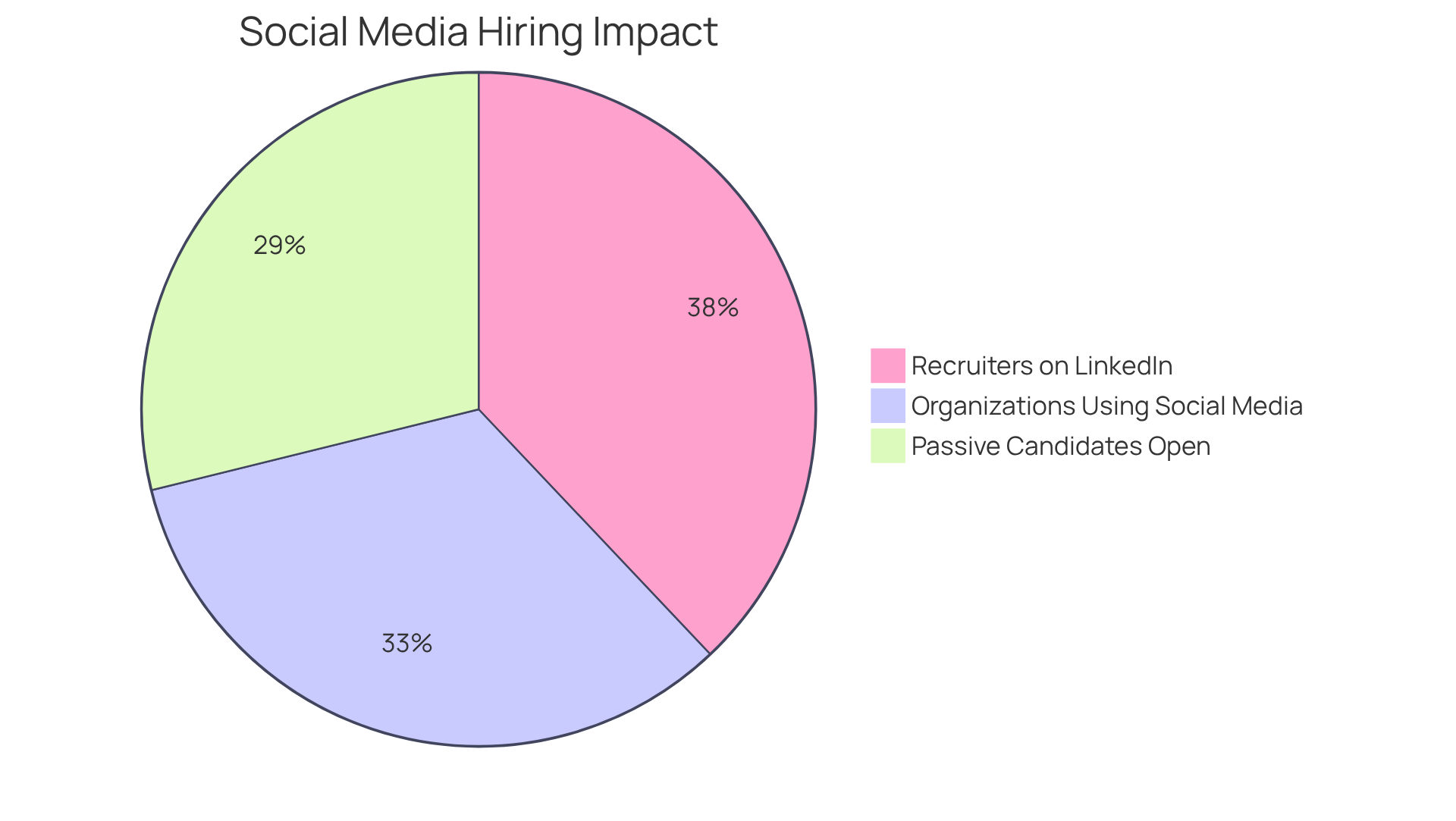
Collaboration Tools: Enhancing Teamwork in Recruitment
Collaboration tools within Websets are essential for enhancing communication and coordination among hiring team members. They provide a centralized platform for sharing candidate information, feedback, and updates, significantly improving collaboration and ensuring alignment on hiring objectives. Furthermore, the Exa API automates comprehensive web research, delivering structured JSON results with citations, thus enhancing the hiring process with precise and timely information.
The platform boasts flexible, high-capacity rate limits and premium support tailored for enterprise needs, which streamline operations. Coupled with a commitment to security and compliance—including SOC2 certification and enterprise data processing agreements—Websets ensures that sensitive information is managed with the utmost care. This integrated approach not only boosts efficiency but also incorporates to foster a unified talent acquisition strategy, ultimately leading to better employment outcomes.
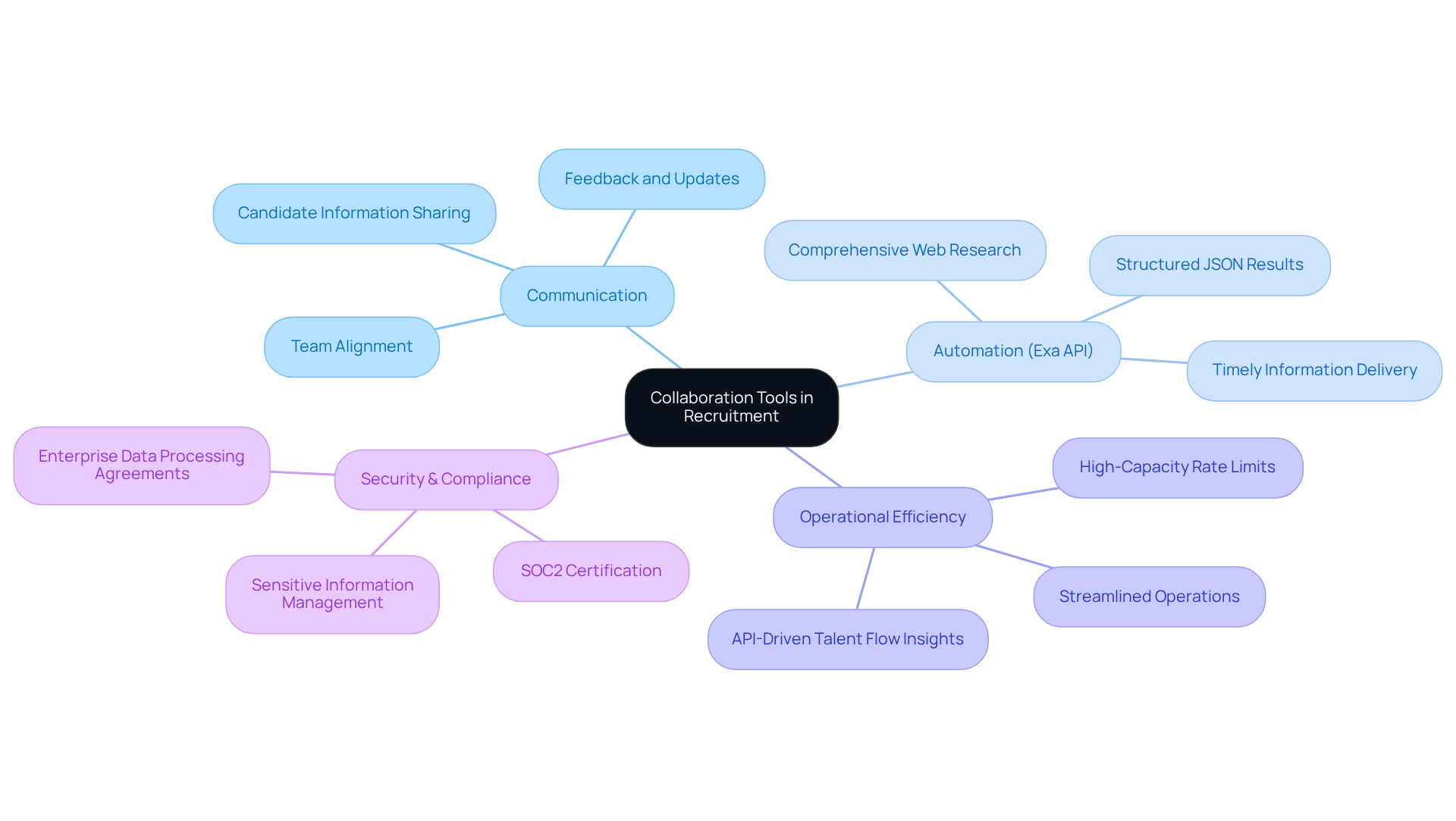
Machine Learning: Predicting Recruitment Success
Websets utilizes machine learning algorithms to analyze historical recruitment data and generate that predict applicant success. This predictive capability reveals trends linked to successful recruits, enabling organizations to enhance their selection standards and streamline hiring processes by leveraging api-driven talent flow insights. Consequently, sales teams can focus on candidates with a higher likelihood of excelling in their roles, which enhances overall team performance and significantly reduces turnover rates.
For instance, api-driven talent flow insights can help reduce time-to-hire and increase retention, as highlighted by DNA Recruit: 'Predictive tools reduce time-to-hire, increase retention and diversity initiatives.' Companies like Unilever have effectively leveraged AI evaluations to refine their hiring procedures, showcasing the transformative power of api-driven talent flow insights in staffing.
Furthermore, Websets provides comprehensive Data Processing Agreements tailored for enterprise customers, ensuring reliability and security in B2B lead generation. This commitment to security and compliance, coupled with an enterprise-ready infrastructure, positions Websets as a leader in AI-driven hiring solutions.
However, it is crucial to recognize potential risks, such as algorithmic bias, which may emerge from poorly implemented AI systems. Striking a balance between these advantages and risks is essential for developing effective hiring strategies.
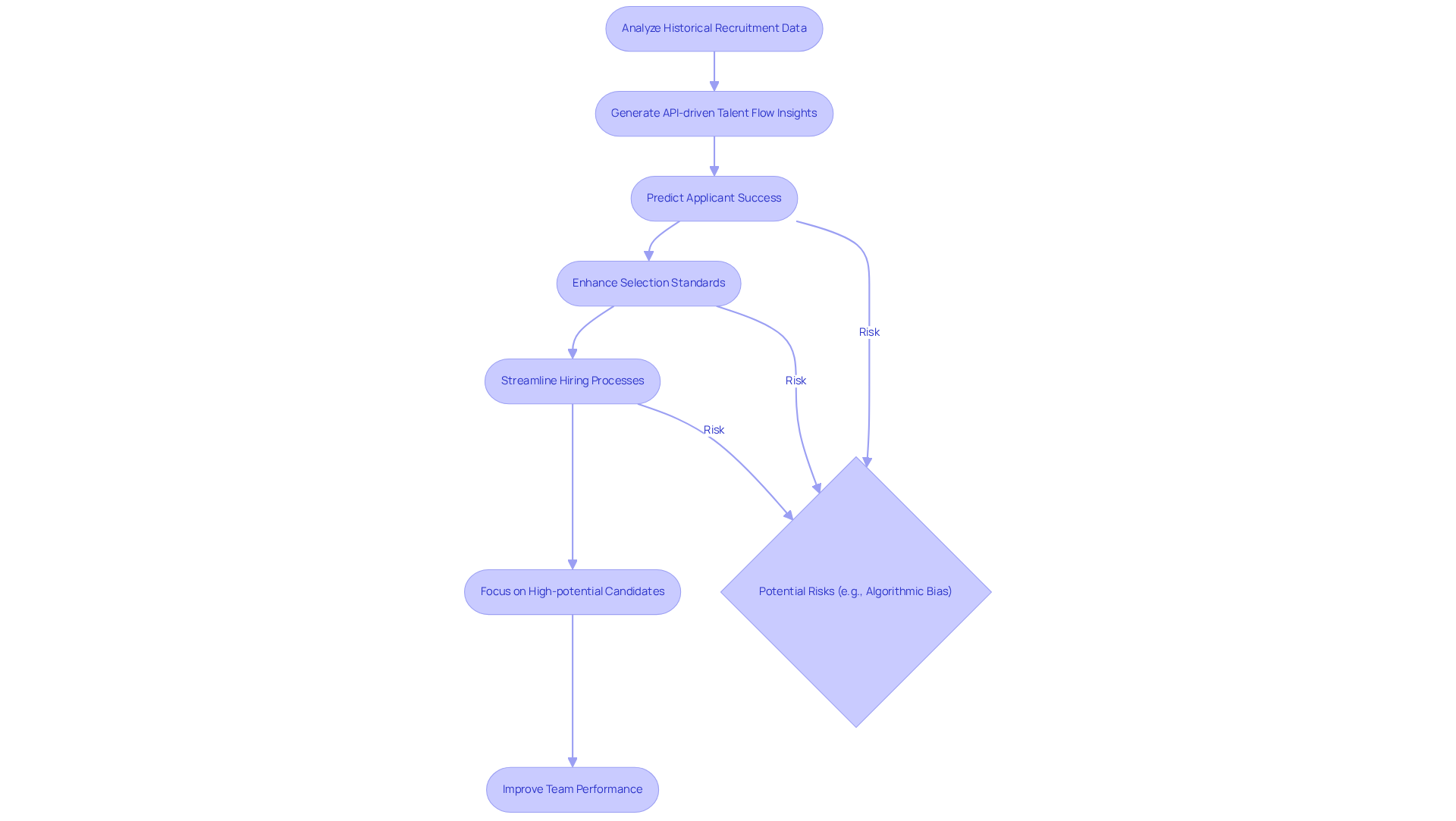
Compliance and Security: Safeguarding Recruitment Data
Websets places a strong emphasis on within its recruitment methods. By ensuring that applicant data is managed in strict accordance with applicable regulations such as GDPR and CCPA, organizations can build a solid foundation of trust. Robust security measures, including strong access controls like multi-factor authentication and data encryption, significantly mitigate risks associated with data breaches. For instance, implementing Data Loss Prevention (DLP) tools prevents sensitive information from leaving the network without authorization. Additionally, conducting regular security audits and assessments is crucial for identifying vulnerabilities that could be exploited.
Clarity in data utilization fosters trust with applicants. They are more inclined to engage with organizations that prioritize their privacy. This commitment not only protects the organization from potential legal repercussions but also enhances its reputation as a responsible employer. As noted by Top Echelon Software, features such as compliance reporting and audit trails are essential for demonstrating adherence to regulations. This reinforces accountability in data management. To maintain applicant trust and streamline hiring processes, organizations should regularly review and update their data protection policies, ensuring compliance with evolving regulations.
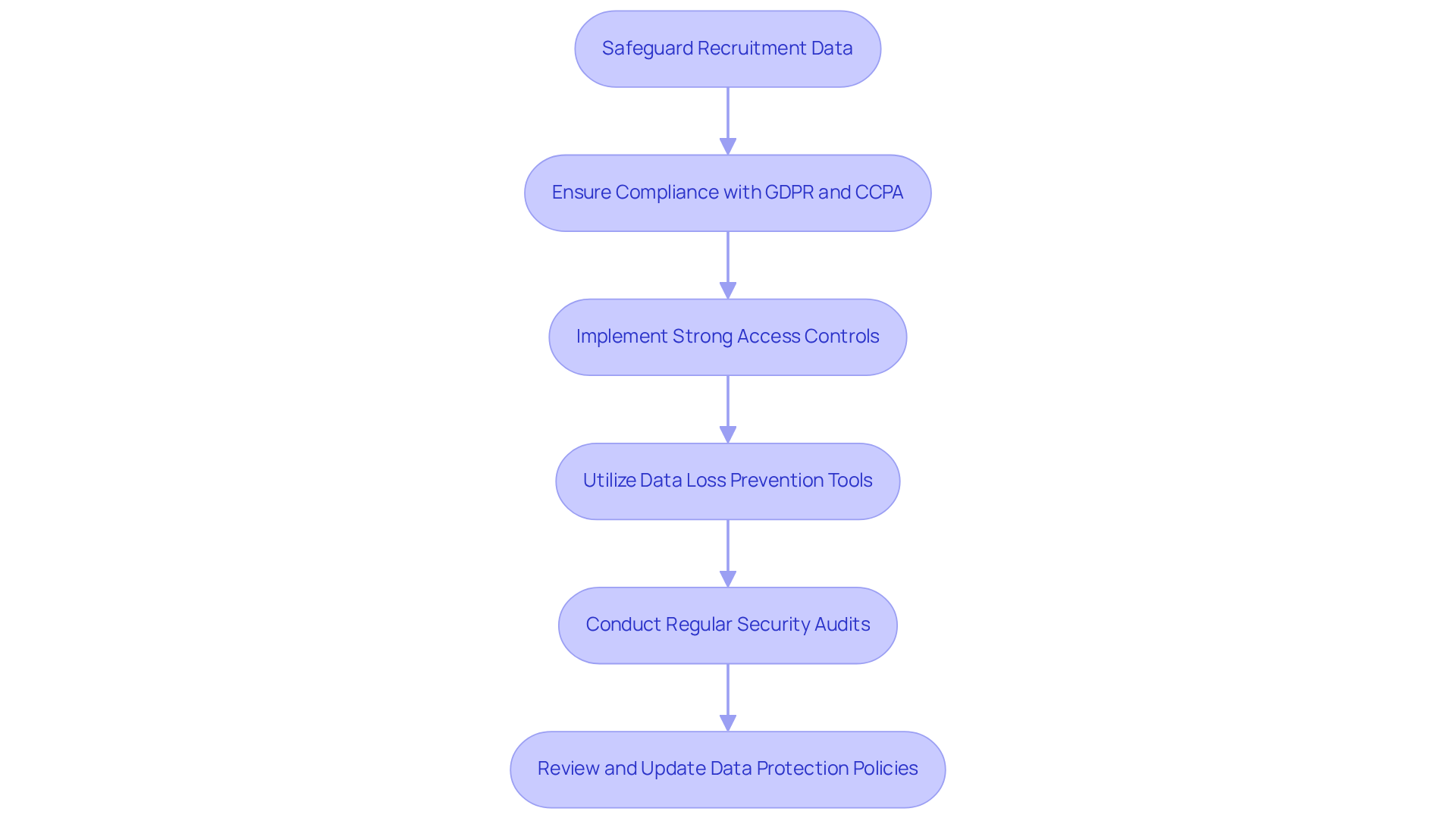
Future Trends: Preparing for the Next Generation of Recruitment Technology
The hiring landscape is undergoing a significant transformation, propelled by advancements in technology and a shift towards automation. Organizations must proactively prepare for the next generation of hiring tools that leverage API-driven talent flow insights, characterized by enhanced AI capabilities and a strong emphasis on applicant experience. For instance, companies like Unilever have effectively integrated AI evaluations and video analysis into their recruitment methods, resulting in shortened selection times and improved candidate satisfaction. Similarly, the British Army has harnessed virtual reality to increase recruitment applications by 66%, demonstrating how immersive technologies can effectively attract talent.
As automation becomes more prevalent, sales team leaders should recognize its potential to streamline recruitment processes. AI tools are now adept at analyzing resumes, matching applicants, and conducting screenings with remarkable efficiency. In fact, teams utilizing AI during the recruitment phase can evaluate 66% more applicants weekly compared to those relying on traditional methods. This transition not only boosts productivity but also offers API-driven talent flow insights that allow recruiters to focus on more strategic aspects of talent acquisition.
Expert insights suggest that the future of hiring will feature a more integrated approach, utilizing API-driven talent flow insights where AI serves as a talent advisor rather than just a tool. As Tom Staight from Microsoft notes, by 2025, platforms will seamlessly incorporate AI throughout the hiring process, allowing recruiters to manage complex applicant situations more effectively. Additionally, the significance of equity, diversity, and inclusion (ED&I) will continue to rise, with technology playing a vital role in mitigating bias and enhancing accessibility in hiring practices.
To remain competitive, sales team leaders must stay abreast of these trends and accordingly. Embracing the next generation of recruitment technology will not only enhance operational efficiency but also improve the overall candidate experience, ultimately leading to superior talent acquisition outcomes.
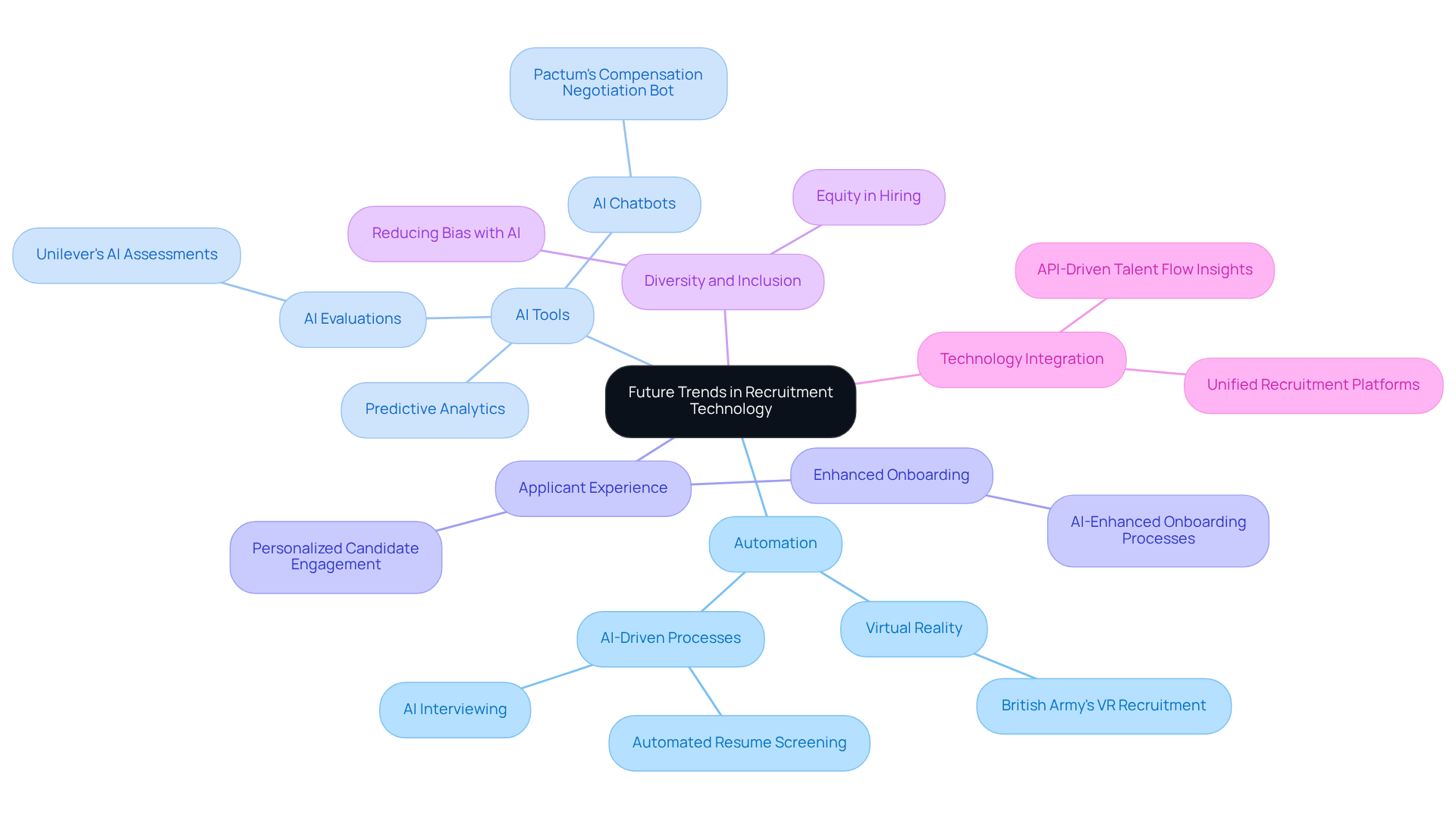
Conclusion
The integration of API-driven talent flow insights is revolutionizing the recruitment landscape for sales team leaders, empowering them to leverage advanced technologies for more efficient hiring processes. By harnessing AI-powered tools and automation, organizations can streamline their recruitment efforts, ensuring not only swift identification of the right candidates but also an enhanced overall candidate experience.
Key insights discussed throughout the article highlight:
- The critical role of data analytics in refining recruitment strategies.
- The impact of social media in broadening talent sourcing opportunities.
- The imperative of compliance and security in managing applicant data.
Collectively, these elements underscore the necessity for sales teams to adopt innovative solutions that align with contemporary hiring practices, ultimately leading to improved operational efficiency and superior hiring outcomes.
As the recruitment landscape continues to evolve, sales team leaders are urged to embrace these advancements and adapt their strategies accordingly. By prioritizing the integration of API-driven insights and automation tools, organizations can enhance their talent acquisition processes while fostering a more equitable and engaging experience for candidates. The future of recruitment hinges on the ability to leverage technology effectively; those who do will be strategically positioned to attract and retain top talent in an increasingly competitive environment.
Frequently Asked Questions
What is Websets and how does it enhance talent discovery?
Websets is an AI-powered platform that revolutionizes talent discovery by using advanced algorithms to provide API-driven talent flow insights. This allows organizations to effectively identify and engage potential applicants, significantly reducing hiring time by analyzing extensive datasets.
How does AI technology improve the recruitment process?
AI technology enhances the recruitment process by improving hiring efficiency. Companies using AI tools have reported up to a 54% increase in recruiter capacity, allowing for quicker and more accurate candidate sourcing. For example, Eightfold's Talent Intelligence Platform matches candidates based on qualifications and inferred skills for a better fit.
What role does API-driven architecture play in recruitment?
API-driven architecture allows Websets to integrate seamlessly with existing HR systems, centralizing recruitment-related data. This integration automates data transfers, reduces manual entry errors, and enhances overall hiring efficiency, enabling sales teams to access all necessary data easily.
What are the benefits of using automation tools in talent acquisition?
Automation tools within Websets streamline the talent acquisition workflow by handling repetitive tasks like applicant sourcing and interview scheduling. This allows sales teams to focus on engaging with applicants and refining strategies, ultimately accelerating the recruitment process and enriching the candidate experience.
How do organizations benefit from centralized data management in recruitment?
Organizations that implement centralized data management through API integration report enhanced candidate tracking and quicker onboarding times. This system supports strategic decision-making and ensures consistent and actionable data across all functions, allowing sales teams to prioritize high-value activities.
What impact does AI have on the success of hiring?
Research indicates that organizations using AI in their recruitment strategies are 46% more likely to achieve successful hires. This demonstrates the effectiveness of AI tools in improving the overall recruitment process and outcomes for organizations.
How can sales team leaders maximize the benefits of Websets?
Sales team leaders can maximize the benefits of Websets by prioritizing hiring tools with open APIs for smoother integration and data flow. They should also explore Websets' automation tools to enhance their hiring efforts and ensure they have the necessary resources to meet peak demands.




